The Cooperative Management of SGang Gwaay between the Haida Nation and the Government of Canada
Case Study prepared by Akbel Guzide, Carleton University
Keywords: Co-Management, Indigenous Heritage, World Heritage, Living Landscape, Interconnectedness
- Lessons Learned
- Description
- Timeline
- Rightsholders and Stakeholders
- Heritage
- Sustainability
- Assessment and Measurement
- Works Cited
LESSONS LEARNED
With World Heritage Sites, the key to successful management can be seen through partnerships and collaboration (Parks Canada). This can be a model where two parties with various perspectives work together to protect cultural landscapes (Susemihl 59). SGang Gwaay is an exceptional example of this, where the cooperative management between the Haida Nation and the Government of Canada has widened the notion of cultural heritage and cultural landscapes on a global scale (Herrmann et al. 62). This framework has built the opportunity for new partnerships and conservation methods to be developed (Herrmann et al. 62). The example of this sacred site illustrates how cooperative decision-making can build strong relationships and sustainable conservation projects (Herrmann et al. 62; Susemihl 71). The co-management of SGang Gwaay is a functional relationship between the Council of the Haida Nation and Parks Canada that was based on respect, communication, and harmony (Herrmann et al. 62). This partnership allows the collective commitments to protect the natural, cultural, and spiritual heritage of the area (Collinson). This relationship, seen today, took many years to build, and this achievement was due to the successful cooperative management approach (Herrmann et al. 78). The partnership with the Haida Nation was built on engagement rather than solely on consultation, which led to a more meaningful and positive collaboration with them (Herrmann et al. 78). The successful management of SGang Gwaay included many laws, policies, and reports from both the Council of the Haida Nation and the Government of Canada, such as the Gwaii Haanas Gina ‘Waadluxan KilGulhGa Land-Sea-People Management Plan.
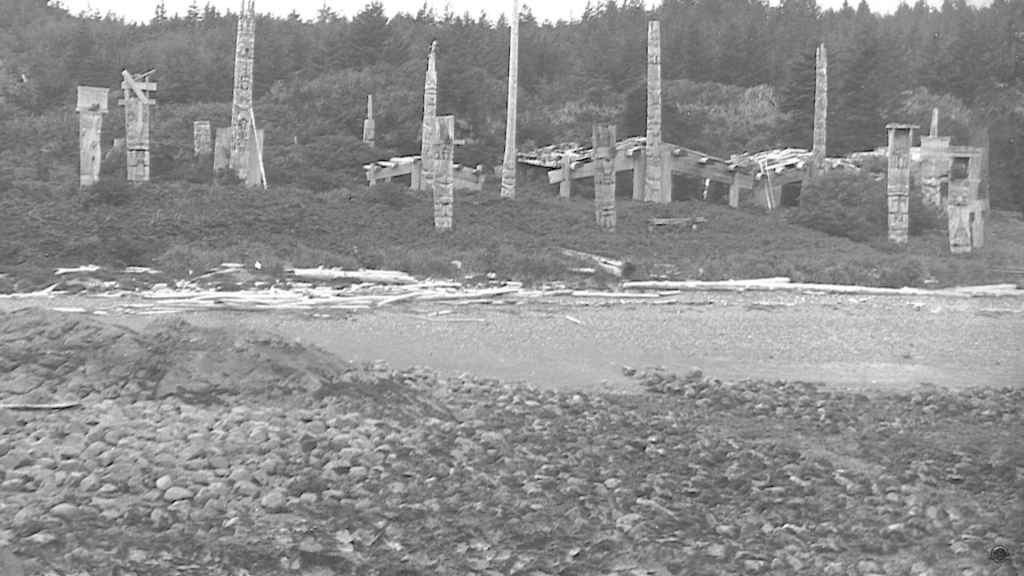
PRESENTATION
The slideshow above of the case study on the cooperative management approach of SGang Gwaay, a UNESCO World Heritage Site, between the Haida Nation and the Government of Canada. It was presented in class on December 1st, 2022.
DESCRIPTION
“SGang Gwaay is such a special place. It’s a beautiful showcase of the architecture and the art. It’s also the showcase of the stories too. The poles which are still standing tell a great story of the people who lived here.” (Parks Canada)
– Camille Collinson
SGang Gwaay, meaning ‘wailing island’ in the Haida language, is located at the south of Haida Gwaii Archipelago, in British Columbia (Herrmann et. 62; Susemihl 52). This sacred site is a Haida Heritage Site, a National Historic Site, and a UNESCO World Heritage Site (Herrmann et al. 67)
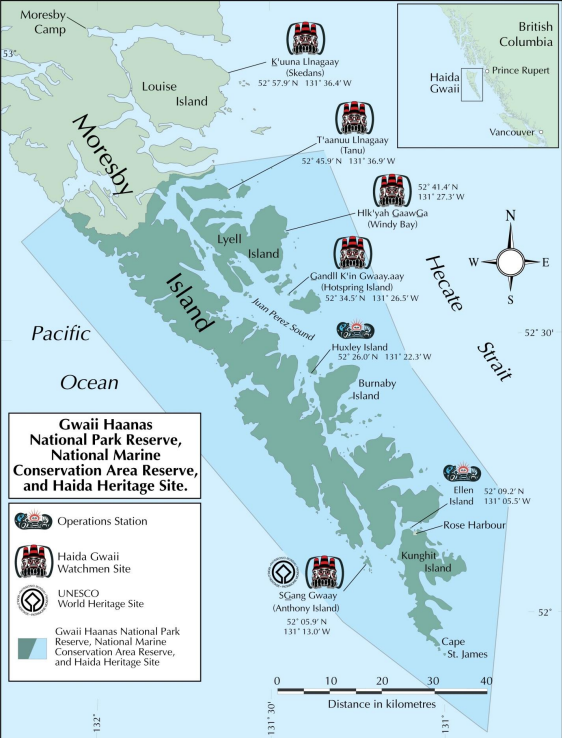
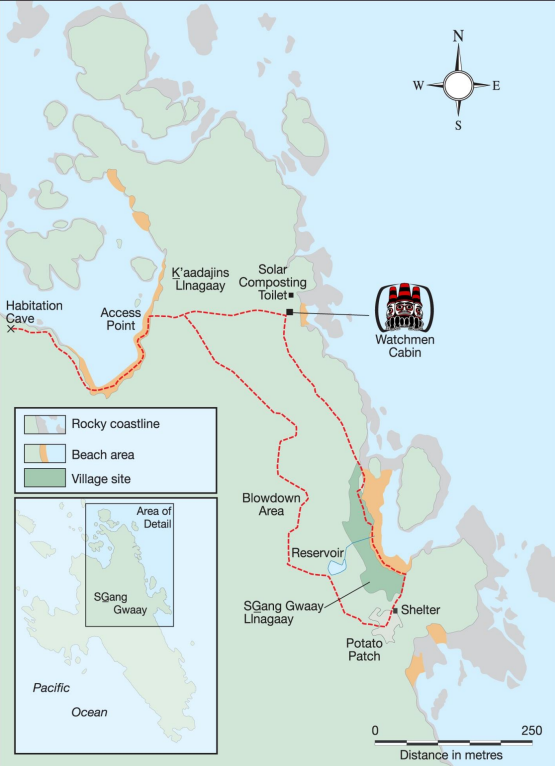
SGang Gwaay has remains of large cedar longhouses, mortuary and memorial poles, and carved totems that represent the living culture of the Haida community . The totem poles carved out of 400-year-old cedar trees both commemorates and symbolizes the histories, ancestors, and the people of this sacred site . This old Haida village formerly had memorial poles which commemorated significant events or people, frontal poles at the entrances of longhouses, and mortuary poles, which were burial sites that honoured the dead . The carvings on the poles are of crests that symbolized natural phenomena (e.g., rainbows and clouds), natural and supernatural animals, and celestial bodies (e.g., the moon and the stars) . The poles that continue to stand are the mortuary poles indicating the burial sites of a chief or person of high esteem; these poles are carved in a way to represent the family lineage . These carved mortuary poles also convey qualities of Haida spirituality, as they display their admiration and respect for their ancestors and chiefs (Herrmann et al. 62 – for the entire par.).
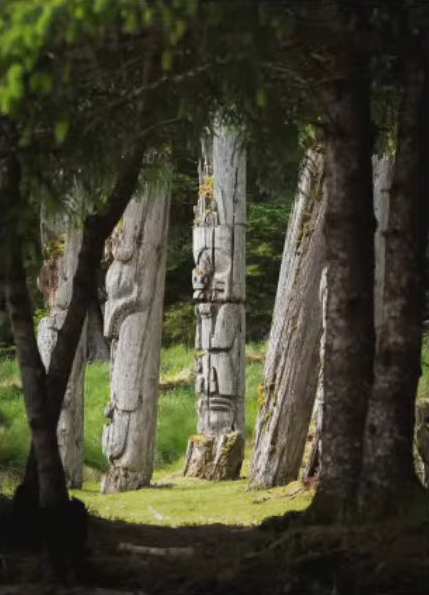
SGang Gwaay is a UNESCO World Heritage Site under:
“Criterion (iii): SGang Gwaay bears unique testimony to the culture of the Haida. The art represented by the carved poles at SGang Gwaay Llnagaay (Nan Sdins) is recognized to be among the finest examples of its type in the world.” (UNESCO)
– UNESCO
SGang Gwaay is a living landscape that is acknowledged by its interconnectedness with the land, sea, and people. Therefore, this sacred site is more than just a historic landscape; this site is seen as being alive and is managed on that accord. This living landscape is tended for by the Haida Nation and the Government of Canada. This collective form of management allows for cultural appreciation, visitor, enjoyment, and use for future education (Collinson – for entire par.).
TIMELINE
Haida have lived on Haida Gwaii since the beginning of time (Collinson).
- 1774: This was the first recorded European contact, which led to rapid social, cultural, and economic changes for the Haida people (Collinson). Diseases were introduced, such as smallpox and influenza, and the Haida population went from 10s of thousands to around 600 people (Collinson). This also forced the Haida people to leave SGang Gwaay and move to other villages (Patterson).
- 1981: SGang Gwaay was declared a World Heritage Site at a meeting in Sydney, Australia (Herrmann et al. 71)
- 1980s: This was the peak of logging corporations which led to impacts on Haida Gwaii (Collinson). Due to increased concern, Haida people, local residents, and other supporters came together to protect the Haida Gwaii forestry (Collinson).
- 1985: Major protests against the logging companies led to the designation of South Moresby Island as a Haida Heritage Site (Herrmann et al. 71). This grassroot movement led to cooperative management in conservation models to circulate around Canada (Collinson).
- 1988: The Government of Canada and British Columbia signed the Memorandum of Agreement on South Moresby designating it a National Park Reserve (Herrmann et. 71; Patterson).
- 1988-1992: Government of Canada and Council of the Haida Nation managed the site together (Herrmann et al. 71).
- 1993: Following protests, the Gwaii Haanas Agreement was signed and recognized the cooperative management of Gwaii Haanas between Haida Nation and the Government of Canada as a National Park Reserve (Herrmann et al. 71). This was the first agreement of its kind in Canada (Collinson).
- 2009: There were no treaties signed between the Haida Nation and Canada or the British Government, therefore, the course to reconcile Haida and Crown titles was defined in the Kunst’aa Guu-Kunst’aayah Reconciliation Protocol (Herrmann et al. 71).
- 2010: The Haida Gwaii name was restored back to the islands (from Queen Charlotte Islands) (Herrmann et al. 71).
- 2010: Gwaii Haanas National Marine Conservation Area Reserve and Haida Heritage Site were both recognized, and the Gwaii Haanas Marine Agreement was signed (Susemihl 60).
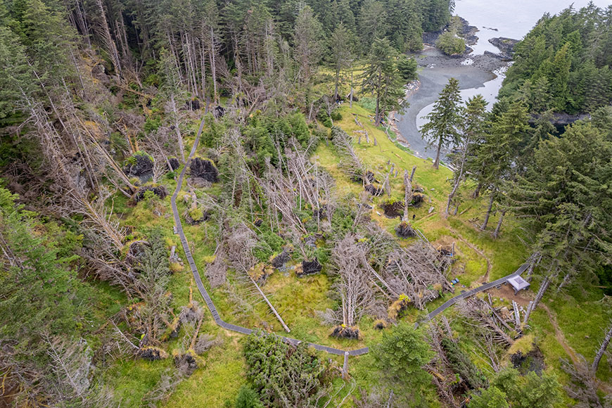
- 2018: Hurricane force windstorm event occurred on SGang Gwaay, where massive trees fell down and ancient longhouse floorboards were lifted up (Parks Canada).
- 2019: The storm damage emergency response was conducted on SGang Gwaay, which included a site visit from the team of Gwaii Haanas staff and Parks Canada archeologists to assess the damage and remove danger trees (Parks Canada).
- 2021-2024: The Living Landscape of SGang Gwaay project was launched, the archeological field work and house structure restoration began and continued in 2023. The collection found from the site will permanently be housed in the Haida Gwaii Museum (Parks Canada).
RIGHTSHOLDERS AND STAKEHOLDERS
“For heritage preservation to succeed it is also fundamental that all the stakeholders are involved in the process of conservation, including communities and their main interests.” (Susemihl 71)
– Geneviève Susemihl
The following are partners that are concerned with the management and care of SGang Gwaay and are involved in the Living Landscape of SGang Gwaay project:
- Haida Nation: The traditional owners and Indigenous group on Gwaii Haanas and SGang Gwaay (Herrmann et al. 74).
- Park Canada: The agency that represents the state and are involved in the care of SGang Gwaay (Herrmann et al. 74).
- Archipelago Management Board: Composed of six members, three from the Council of the Haida Nation and three from the Government of Canada (these are representatives from Parks Canada and the Department of Fisheries and Oceans) (Collinson). Every member must agree on a decision before it can move forward; therefore, this is seen as a true cooperative management approach (Collinson).
- Haida Hereditary Leaders: These leaders are consulted and the advice that is provided from them is included in the solution process, as they have moral authority over the Haida village sites (UNESCO).
- Haida Gwaii Watchmen Program: These site guardians and guides of Gwaii Haanas and SGang Gwaay are managed by the Skidegate Band Council and are a vital group in the management of the islands (UNESCO).
- Haida Gwaii Museum located at Ḵay Llnagaay: The archeology and restoration work, as part of the Living Landscape of SGang Gwaay project, is made possible with the Haida Gwaii Museum’s partnership (Parks Canada). The Gwaii Haanas team secured funds for the project from the Nature Legacy program, and enlisted the Haida Gwaii Museum as a project partner through a contribution agreement (Parks Canada). The Haida Gwaii Museum will also permanently house the work collected at this museum (Parks Canada).
- United Nations Educational, Scientific and Cultural Organization: (UNESCO): In 1981, the organization that inscribed SGang Gwaay on the World Heritage List.
NATURAL/CULTURAL HERITAGE (Interlinked)
SGang Gwaay is managed as part of the Haida Heritage Site, the Gwaii Haanas National Park Reserve, and the National Marine Conservation Area Reserve (Herrmann et al. 63). All the decision-making between the Haida Nation and the Government of Canada follow under the following laws, policies, and reports: the Gwaii Haanas Agreement (1993), the Gwaii Haanas Marine Agreement (2010), the Constitution of the Haida Nation (2021), the Canadian National Parks Act (2000), and the Canadian National Marine Conservation Areas Act (2002) (Herrmann et al. 63). Additionally, the Gwaii Haanas Gina ‘Waadluxan KilGulhGa Land-Sea-People Management Plan (2018) is based on guiding principles from Haida laws (Collinson). These principles are: ethics and values of respect, responsibility, interconnectedness, balance, seeking wise counsel, and giving & receiving (Collinson).
“All actions related to the planning, operation and management of the Archipelago will respect the protection and preservation of the environment, the Haida Culture, and the maintenance of a benchmark for science and human understanding.” (Government of Canada and Council of the Haida Nation)
– Gwaii Haanas Agreement, 1993
The natural and cultural heritage on SGang Gwaay is interlinked. An excellent example of this concept can be based on the following question: “what conservation method should be used when preserving the mortuary and memorial poles?”
If Parks Canada, from a Western scientific perspective, were solely making that decision, then it would include the use of appropriate technology in preserving the poles (Herrmann et al. 74). Effective measures would also have to be taken in maintaining the poles (Herrmann et al. 74). However, for the Haida Nation, their approach would be centred around traditional Haida practices (Herrmann et al. 74). The mortuary poles are burial sites of a chief or person of high esteem, therefore, it would follow the traditional burial practices (Herrmann et al. 74). Nature should not be prevented when doing their work, and as such, the wood should go back to the Earth as part of the natural lifecycle “as stated in Kimberley Declaration, ‘We are the land, the land is us’” (Hermann et al. 74).
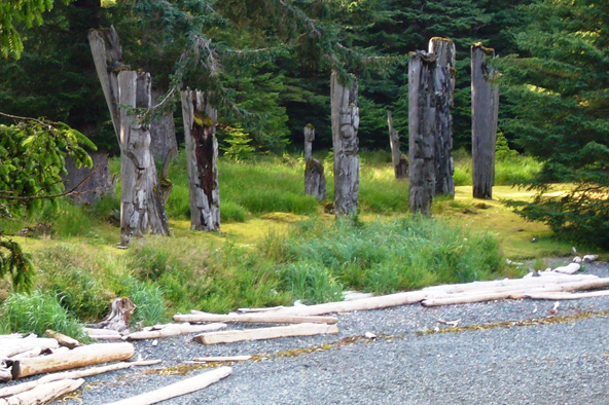
In a collaborative manner, both Parks Canada and the Haida Nation have agreed to delay the poles process of natural deterioration with certain conservation methods (Herrmann et al. 74). For instance, moss and other vegetation from around the poles will be removed every year, and some poles will be straightened or reinforced to prevent them from falling over (Collinson; Herrmann et al. 74). However, no extraordinary measures, such as the use of chemicals, will be enforced on the mortuary poles, and they will eventually be allowed to return to the Earth (Herrmann et al. 74; Patterson). This collaborative approach in conservation appreciates the tangible and intangible heritage of the mortuary poles to enrich the connection between the Haida people and their surrounding environment (Herrmann et al. 74). Therefore, the notion of heritage on SGang Gwaay is based on elements of natural and cultural methods working together as a whole (Herrmann et al. 75; Susemihl 53).
SUSTAINABILITY
Environmental/Social/Cultural/Economic Sustainability (Interconnected)
Similar to the heritage aspect of SGang Gwaay, the sustainability methods on this sacred site are also interconnected. The following various activities, actions, and events on SGang Gwaay do interlink in one way or another to the four categories of environmental, social, economic and cutltural sustainability.
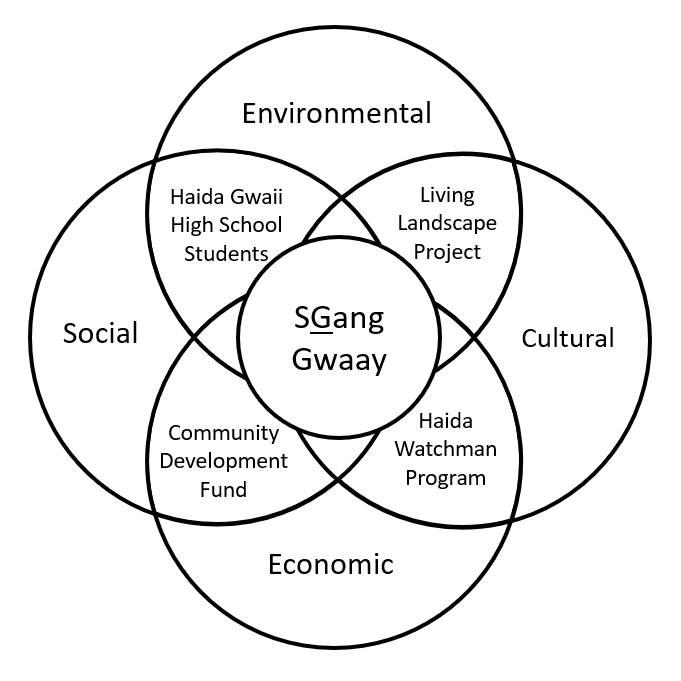
- Living Landscape of SGang Gwaay Project: This is a multidisciplinary project that aims to restore and protect the ecological and cultural integrity of SGang Gwaay after the 2018 hurricane force windstorm event. Through the cooperative management approach, this conservation and restoration project is funded by Parks Canada, in collaboration with the Haida Gwaii Watchmen program and the Haida Gwaii Museum. This storm allowed the possibility to investigate and apply knowledge from more than 12,000 years in preserving and restoring SGang Gwaay as a flourishing eco-cultural system. The knowledge that is gathered during this project will be used towards the cultural restoration plan, which will provide strategies for restoring Haida culture for future generation, protecting native plant growth, and reducing the impacts of climate change (Collinson – for entire par.).
- Haida Gwaii High School Students: It is quite difficult to travel to Gwaii Haanas, as the only form of travel to and from these islands is by floatplane or on by boats that can handle rough water terrain. Cultural exchange programs to Gwaii Haanas or SGang Gwaay is difficult to come by. Therefore, the Archipelago Management Board is economically financing a program that allows every Haida Gwaii high school student to visit and experience Gwaii Haanas before they graduate to allow them to create personal connections to these islands (Patterson). The students will have the chance to form a relationship with the land from listening to elders passing down their knowledge to them (Susemihl 61).
- Swan Bay Rediscovery Program and Haida Heritage Center: The Swan Bay Rediscovery Program is another program where Indigenous children and youth can learn Haida cultural skills and knowledge from elders through various activities. This programming will allow them to build their life skills, confidence, and self-esteem. Some of these activities include learning traditional songs, dances, cedar bark weaving, visiting Haida heritage sites, and playing sport games. These programs allow for Haidas to obtain spiritual and cultural appreciation and pass down traditional knowledge to Indigenous and non-Indigenous people. Additionally, in 2008, the Haida Heritage Center located at Ḵay Llnagaay opened a gathering place. This also allows the Indigenous community and elders to share wisdom, Haida histories and knowledge, and co-create Haida culture, language, and art (Susemihl 61 – for entire par.).
- Community Development Fund: This fund was established as part of the South Moresby Agreement to economically support the island. This “enhance[s the] understanding between the communities and cultures of the islands through the process of joint community economic planning and development”. In addition to this fund, Parks Canada does provides funding to Gwaii Haanas. However, to lessen the dependence on public funds, the Archipelago Management Board implemented a ‘creative approach’ to economically finance programs and services. For instance, through corporate sponsorships, commercial publications, endowment funds, and user-pay programs (Susemihl 60 – for entire par.).
- Haida Gwaii Watchmen Program: This stewardship program, formed in 1981 under the co-management of SGang Gwaay, offers seasonal employment for Haida to work and live on old Haida villages from May to September as groundkeepers (Collinson; Susemihl 61). Haida watchmen work as guardians to maintain the security and safety of those old villages (Herrmann et al. 76). In addition, they provide interpretation and education to Haida youth and visitors about the natural and cultural heritage of Gwaii Haanas and SGang Gwaay and provide conservation efforts (Collinson; Susemihl 61). The Haida watchmen distribute first-hand knowledge of the land and sea, traditional foods, songs, dances, and stories (Susemihl 61).
ASSESSMENT AND MEASUREMENT
As part of the collaboration between the Haida Nation and the Government of Canada, SGang Gwaay abides by many Haida and Government of Canada policy documents. The primary document to be outlined is the 2018 Gwaii Haanas Gina ‘Waadluxan KilGulhGa Land-Sea-People Management Plan (refered to below as Gwaii Haanas Gina Plan). Gina ‘Waadluxan KilGulhGa, meaning ‘talking about everything’ in Haida language, is a plan that informs the Archipelago Management Board on how to manage the interconnected ecosystem at Gwaii Haanas and SGang Gwaay (Government of Canada and Council of the Haida Nation).
The Gwaii Haanas Gina Plan provides guiding principles driven from Haida laws, a collective vision for the future, and outlines the goals for the sacred site (Government of Canada and Council of the Haida Nation). This plan showcases the knowledge and experience the Archipelago Management Board has achieved through the collaborative management approach in decision making processes that respect both laws and authorities (Government of Canada and Council of the Haida Nation).
The development of the Gwaii Haanas Gina Plan was in support with Haida and local communities, which illustrates that more can be accomplished when working in collaboration (Government of Canada and Council of the Haida Nation). This plan signifies the successful achievement between both governments, as it includes the use of an ecosystem-based management and protection plan based on the traditional laws and knowledge of the Haida (Government of Canada and Council of the Haida Nations). Similar to the Gwaii Haanas Agreement, this plan was the first of its kind in Canada (Government of Canada and Council of Haida Nation).
The Gwaii Haanas Gina Plan offers a framework that recognizes the stewardships to enrich the connection between the Haida culture and preserve the natural heritage of Gwaii Haanas and SGang Gwaay for future generations (Government of Canada and Council of the Haida Nation). Additionally, the Gwaii Haanas Gina Plan correlates to some of the goals within the 2015 UN Sustainable Development Goals. The following are several goals from the Sustainable Development Goals and all the goals from the Gwaii Haanas Gina ‘Waadluxan KilGulhGa Land-Sea-People Management Plan that relate to one other.
2015-2030 Sustainable Development Goals (SDG) of the United Nations:
- SDG 3: Ensure healthy lives and promote well-being for all at all ages
- SDG 4: Ensure inclusive and equitable quality education and promote lifelong learning opportunities
- SDG 8: Promote sustained, inclusive, and sustainable economic growth, full and productive employment, and decent work for all
- SDG 15: Protect, restore, and promote sustainable use of terrestrial ecosystems, sustainability manages forests, combat desertification, and halt and reverse land degradation and halt biodiversity loss
- SDG 16: Promote peaceful and inclusive societies for sustainable development, provide access to justice for all and build effective, accountable, and inclusive institutions for all levels
- SDG 17: Strengthen the means of implementation and revitalize the Global Partnership for Sustainable Development
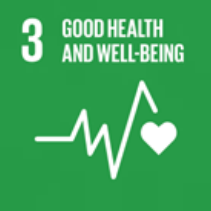
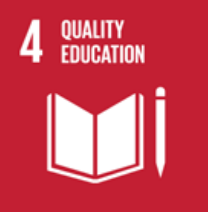
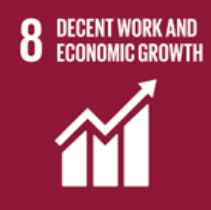
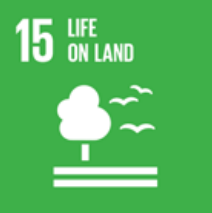
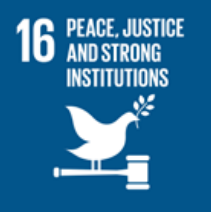
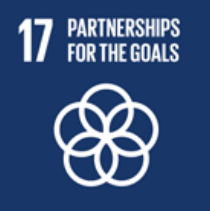
BBCIC. Selected SDGs. Where Canada Stands: A Sustainable Goals Progress Report, 2017.
Goals of the 2018 Gwaii Haanas Gina ‘Waadluxan KilGulhGa Land-Sea-People Management Plan:
- Goal 1: Implement effective collaboration for planning and management
- Goal 2: Protect, conserve, and restore biodiversity and ecosystems
- Goal 3: Support the continuity of Haida culture
- Goal 4: Foster ecologically sustainable resource use that benefits Haida Gwaii communities
- Goal 5: Advance knowledge and understanding in Gwaii Haanas
- Goal 6: Enhance public awareness of and appreciation for Gwaii Haanas
- Goal 7: Facilitate opportunities for meaningful visitor experiences
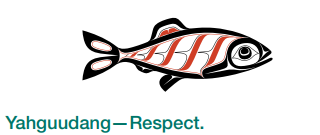
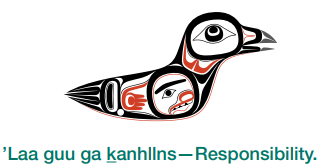
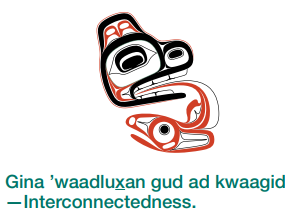
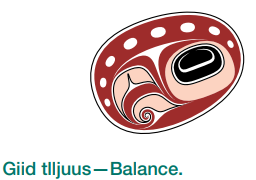
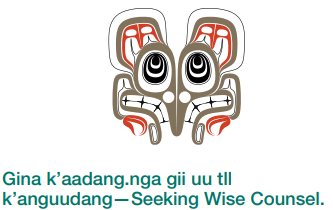
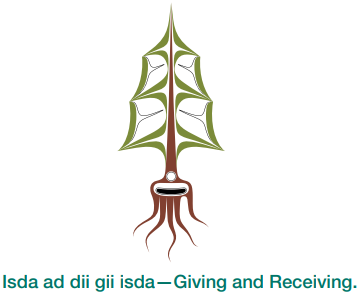
Government of Canada and Council of the Haida Nation. “Photos of the Guiding Principles derived from the ethics and values of Haida laws.” Gwaii Haanas Gina ‘Waadluxan KilGulhGa Land-Sea-People Management Plan, Nov. 2018.
WORKS CITED
Book Chapters/Journal Articles
- Herrmann, Thora, et al. “Protecting Sacred Sites, Maintaining Cultural Heritage, and Sharing Power: Co-Management of the SGang Gwaay UNESCO World Heritage Site in Canada.” Indigenous Rights in Modern Landscapes Nordic Conservation Regimes in Global Context, edited by Lars Elenius, et al., Routledge, 2017, pp. 62–81.
- Susemihl, Geneviève. “Cultural World Heritage and Indigenous Empowerment: The Sites of SGang Gwaay and Head-Smashed-In Buffalo Jump.” Journal for Canadian Studies, vol. 33, no. 1, Feb. 2013, pp. 51–77.
Policies and Reports
- Council of the Haida Nation. Constitution of the Haida Nation, Oct. 2021.
- Government of Canada and Council of the Haida Nation. Gwaii Haanas Agreement, Jan. 1993.
- Government of Canada and Council of the Haida Nation. Gwaii Haanas Gina ‘Waadluxan KilGulhGa Land-Sea-People Management Plan, Nov. 2018.
- Government of Canada and Council of the Haida Nation. Gwaii Haanas Marine Agreement, Jan. 2010.
- Government of Canada. Canadian National Marine Conservation Areas Act, 2002.
- Government of Canada. Canadian National Parks Act, 2000.
- Haida Nation and British Columbia. Kunst’aa Guu–Kunst’aayah Reconciliation Protocol, 2009.
- United Nation. Transforming Our World: The 2030 Agenda For Sustainable Development, 2015.
Websites
- Collinson, Camille. “Gwaii Haanas Cultural Landscape: A Cooperative Management Approach.” YouTube, uploaded by National Capital Commission, 5 May 2022.
- Parks Canada. “Living Landscapes of SGang Gwaay: Strengthening the Land and People in a Changing Climate.” Government of Canada, 19 May 2022.
- Patterson, Carol. “Scientists and Traditional-Knowledge Keepers Endeavor to Restore the Natural and Cultural Landscapes of the Haida Gwaii Archipelago in British Columbia.” Island Conservation, 13 Dec. 2017.
- UNESCO World Heritage Convention. SGang Gwaay. Accessed 17 Oct. 2022.
Banner Image: Parks Canada. “SGang Gwaay (Anthony Island).” Government of Canada, 12 May 2020.